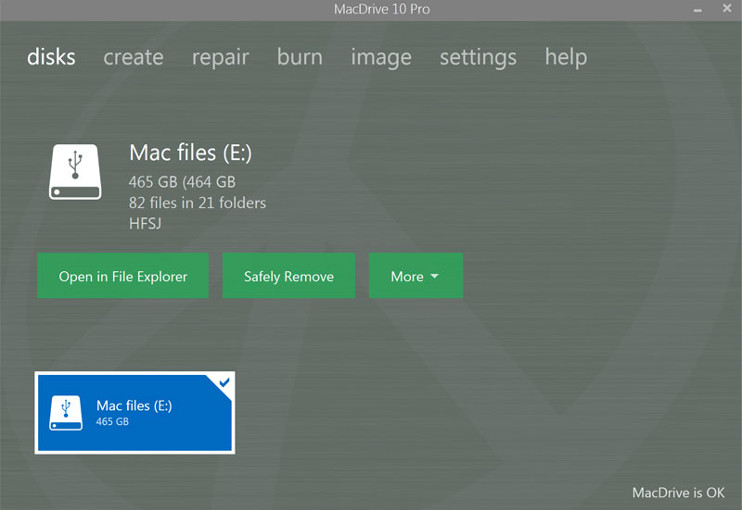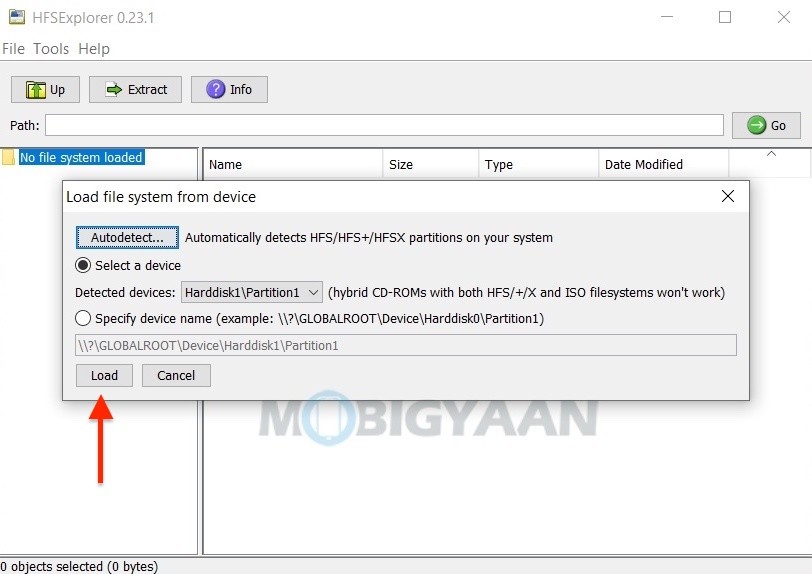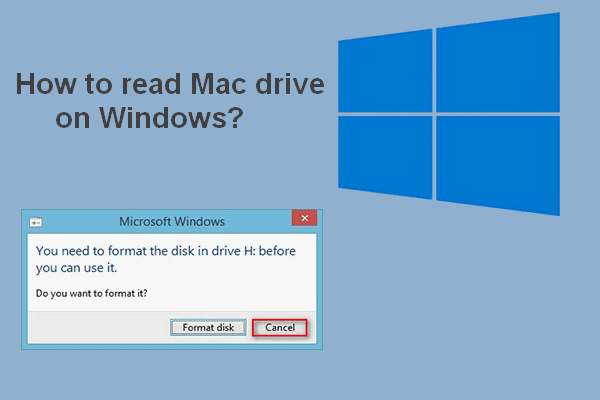
- #MAC DRIVE READER SOFTWARE HOW TO#
- #MAC DRIVE READER SOFTWARE INSTALL#
- #MAC DRIVE READER SOFTWARE DRIVER#
- #MAC DRIVE READER SOFTWARE FULL#
- #MAC DRIVE READER SOFTWARE PRO#
If you need all these tools, go for it–this is the most full-featured solution for working with Mac-formatted drives on Windows. Paragon’s HFS+ gets out of your way and doesn’t provide a graphical interface–it just enables access to HFS+ drives in File Explorer and other applications. It also offers a graphical interface with support for verifying, repairing, and formatting Mac-formatted drives.
#MAC DRIVE READER SOFTWARE PRO#
It’s noticeably more expensive than Paragon HFS+ too, at $50 for the Standard version and $70 for the Pro version.įor most people, this software won’t really be worth it. But it offers a few unique features, like support for Mac-formatted RAID disks. Mediafour’s MacDrive is similar to Paragon’s HFS+ for Windows, but with more features and polish. Option Three: Mediafour MacDrive Costs $50 to $70, But Includes More Features And, if you just need to get files off of a Mac-formatted drive once, you can just use the trial and be done with the application by the time it expires. Paragon does offer a 10-day free trial of HFS+ for Windows, so you can give it a try and see if it works for you. But, if you just need to get some files off a Mac-formatted drive occasionally, this is overkill and you can save $20 by sticking with HFSExplorer. If you need to work with Mac-formatted drives on a regular basis and you want the operating system integration, speed, and write access, Paragon HFS+ is a great choice and will be worth it for you.
#MAC DRIVE READER SOFTWARE INSTALL#
Just install it, and Mac drives will show up like any other drive.
#MAC DRIVE READER SOFTWARE FULL#
And, unlike HFSExplorer, it offers full read/write access to Mac-formatted drives, so you can write to them from within Windows. It boasts improved speed, and we wouldn’t be surprised if it were faster than HFSExplorer.
#MAC DRIVE READER SOFTWARE DRIVER#
This tool installs a file system driver that allows you to access a Mac-formatted drive like any other drive in File Explorer, or any other Windows application with an open or save dialog. Paragon’s HFS+ for Windows is a bit fancier, but it’ll cost you. Option Two: Paragon HFS+ is $20, But Offers Write Access and Better Integration They’ll be copied to the location you choose on your PC. Just select the files or folders you want, click “Extract,” and choose a folder. You’ll see the contents of the HFS+ drive in the graphical window. Click the “File” menu and select “Load File System From Device.” It will automatically locate the connected drive, and you can load it. To use HFSExplorer, connect your Mac-formatted drive to your Windows PC and launch HFSExplorer. You can set read-only mode in other applications, too–but, if you’re not going to use their write support, there’s less reason to pay for them. It ensures that no bug in the third-party driver can damage your Mac-formatted drive and the files on it. This application’s read-only nature isn’t necessarily a bad thing. dmg disk images to get at the files inside them. But you can open HFSExplorer, read a Mac-formatted drive, and copy the files to your Windows PC without paying a dime. You can’t use it to write to Mac-formatted drives, and it doesn’t install a file system driver that integrates into File Explorer.

HFSExplorer isn’t fancy, though, and doesn’t have a lot of features. Then, install HFSExplorer like you would any other Windows program.

It does require Java, however, so you’ll have to install that first. It’s the only completely free way to access a Mac-formatted drive. If you only need to get a couple files off the drive, we recommend HFSExplorer.
#MAC DRIVE READER SOFTWARE HOW TO#
RELATED: How to Restore Files From a Time Machine Backup on Windows Option One: HFSExplorer Is Free and Basic But be absolutely sure there’s nothing you need before you do. Of course, if the drive doesn’t have any important files on it, you can go ahead and format it. Just don’t format the drive until you get the important files off the drive.

That’s fine, because other applications do. This message appears because Windows doesn’t understand Apple’s HFS+ file system.

When you connect a Mac-formatted drive to Windows, you’ll be informed that “you need to format the disk in drive X: before you can use it.” Don’t click the “Format disk” button or Windows will erase the contents of the drive–click “Cancel”!


 0 kommentar(er)
0 kommentar(er)
